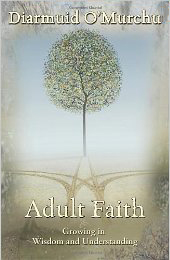Session 2 - two impossible ideas
[comments and questions can be posted on Stephen's substack page, at Session 2 - two impossible ideas]
TL;DR (Summary)
[comments and questions can be posted on Stephen's substack page, at Session 2 - two impossible ideas]
TL;DR (Summary)
I recently attended a philosophy class focused on the ancient Greek philosophers, such as Plato, and others.
I was surprised by the relatively shallow depth of the ideas discussed, when viewed through a quantum holodynamic perspective.
I came to the conclusion, rightly or wrongly, that unless the philosopher is post-quantum, they're not really going to add much insight into life.
[See supplemental article Covid-19, herd immunity and common sense]
At a dinner party recently I explained that "genuine creativity leads God", in that everyone else (including God1) is genuinely, gob-smackingly surprised by our raw originality.
One woman was deeply shocked and horrified by the idea. She said she completely "shut down" with regards to anything else I had to say. Golly.
Update (August, 2016) - see latest regarding the dynamics of gender
When writing Be and Become during the latter half of the 90's, the various revisions of the manuscript1 included chapter (Nine) titled as "Men are particles, women are waves".

Picked up an interesting book at a friend's place -- Diarmuid O'Murchu's "Adult Faith: Growing in Wisdom and Understanding"1
In recent years there's been much talk of the Law of Attraction, popularised in the film "The Secret".
As with many systems of belief, there is a great deal that is helpful and uplifting about the "Law of Attraction". We can and do attract favourable (or unfavourable) 'things' into our lives, based on our beliefs.
But the attractive principle is a deeply feminine energy - it's reliant on the receptive (on receiving); of being open and inviting.
By coincidence I've only recently (namely, this morning) come across a 1991 paper by Prof. Robert Jahn of Princeton's famous1 PEAR laboratory.
Jahn's paper is quite extraordinary, at least for me, for it covers many of the basic concepts that I wrote about in my book Be and Become.2
One of the central points of Jahn's paper is that not understanding the complementarity of 'masculine' and 'feminine' fuels "immensely destructive" behaviours and results, both personally and socially. From Jahn's paper:
When posed in polar opposition, whether within a single personality, or in the context of the ubiquitous interactions between the male and the female sexes, the failures of this interface are legion, legendary, and immensely destructive, both personally and socially. Yet, when deployed in constructive complementarity, the masculine/feminine integration within the individual can enable the highest creativity and personal satisfaction, and in the male/female partnership can generate some of the highest accomplishments, profoundest insights, and most beautiful resonances of human existence. In this form, it is probably the species' most powerful resource for spiritual as well as physical survival and evolution.
Why I concur with Jahn is that the deeper nature of what 'feminine' and 'masculine' actually mean is not widely understood or appreciated.